Common flower cultivation and appreciation at home (IV)
Family: Onagraceae, the genus Fuchsia is an evergreen shrub.

It can reach 1 meter in height. The stem is smooth, the branches are thin and slightly drooping, often with purple-red. The leaves are opposite or three-leafed, with short petioles, ovate-lanceolate. The flowers are solitary in the leaf axils, and the pedicels are about 5 cm long and drooping; the calyx tube is oblong, the sepals are 4-lobed, radially located below the corolla, and the corolla is upside down, bell-shaped, hence the name. The stamens and pistils are higher than the corolla, like the hanging whiskers of a lantern. There are many varieties and hybrids of the hanging bell begonia. For example, "Cover Girl": the flowers are double petals, the calyx is bright red, and the petals are blue-purple; the calyx of the white-calyx fuchsia is milky white, and the petals are pink; the single-petal hanging bell begonia has single petals, the sepals are magenta, and the corolla is white; the "Winston Churchill" fuchsia has larger red sepals and blue-purple corolla, which is beautiful and noble.
The hanging bell begonia is native to Peru and southern Chile in South America. It likes warm and humid environments, plenty of sunshine in winter, and cool and semi-shady environments in summer. It is most afraid of heat. When the temperature exceeds 30℃, it is extremely unfavorable for its growth, and it often becomes semi-dormant or dies. It can tolerate low temperatures of 3-5℃ in winter. The suitable temperature during the growth period is 10-23℃. It requires fertile sandy loam. Begonia is a long-day plant. Extending the daylight can promote flower bud differentiation and flowering. Guangdong uses this method to control Begonia to bloom during the Spring Festival.
Name:
Althaea rosea. Scientific name: Althaea
rosea. English name: Hollyhock
. Other names: Yizhanghong. Seasonal flower. Rongkui. Wukui. Weizukui. Hu Kui
Family name: Malvaceae
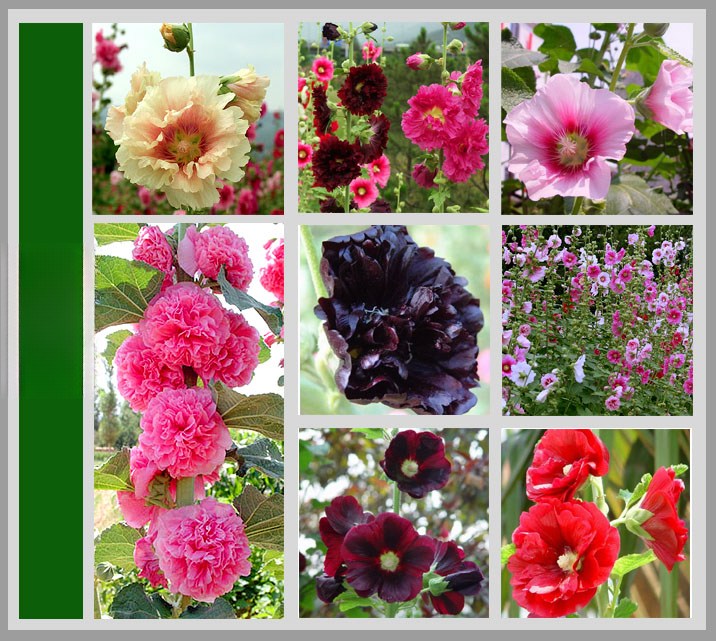
Morphological characteristics: Perennial herb. Stem erect and tall. Leaves alternate, heart-shaped. Flowers are racemose, single or double petals, purple, pink, red, white and other colors. Flowering period is from June to August. Capsule, seeds are oblate, kidney-shaped. Native to, widely distributed in East China, Central China, and North China. Cold-resistant, likes sun, tolerates semi-shade, avoids waterlogging.
[Ecological habits] Hollyhock is native to Asia. It was first discovered in Sichuan, hence the name hollyhock. It likes light, is not shade-tolerant, and its underground part is cold-resistant. It can overwinter in the open field in North China. It is not selective about soil, but grows well in loose and fertile soil. It is a herbaceous flower of the current year.
Name:
Chinese Rose Scientific name: Rosa chinensis English name: Chinese Rose
Other names: Yueyuehong, Changchunhua, Sijihua, Shengchun, Yueyuehong
Family: Rosaceae Rosa genus Short and upright shrub
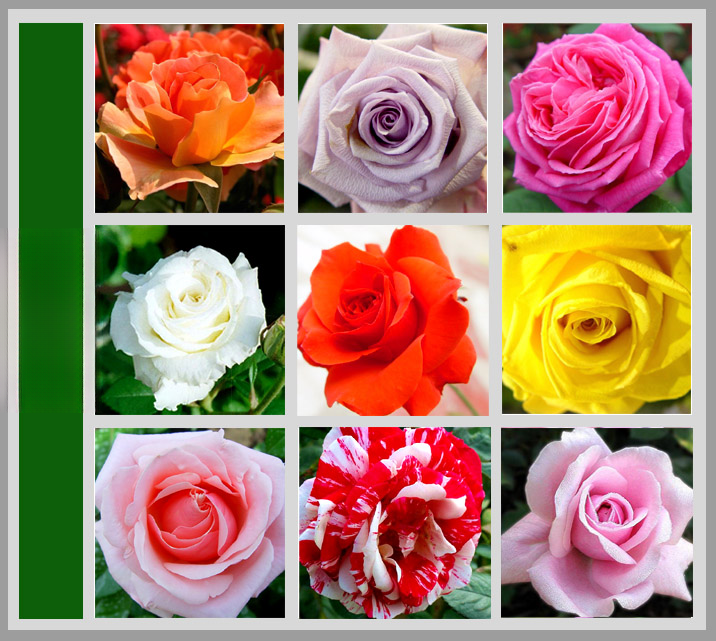
The small branches are thick and have hooked prickles, pinnate compound leaves, 3-5 leaflets. The flowers are red, yellow, orange, white, blue, purple, green and other colors, with fragrance, blooming all year round, mainly from March to October, native to China, and one of the top ten famous flowers.
Rose likes sufficient sunshine, air circulation, good drainage and an environment that can avoid cold wind and dry wind. It is more resistant to drought but afraid of waterlogging. It has strong adaptability to soil and prefers loose, fertile, well-drained sandy loam.
Name: Climbing Rose (CL)
English name: Limbing Rose
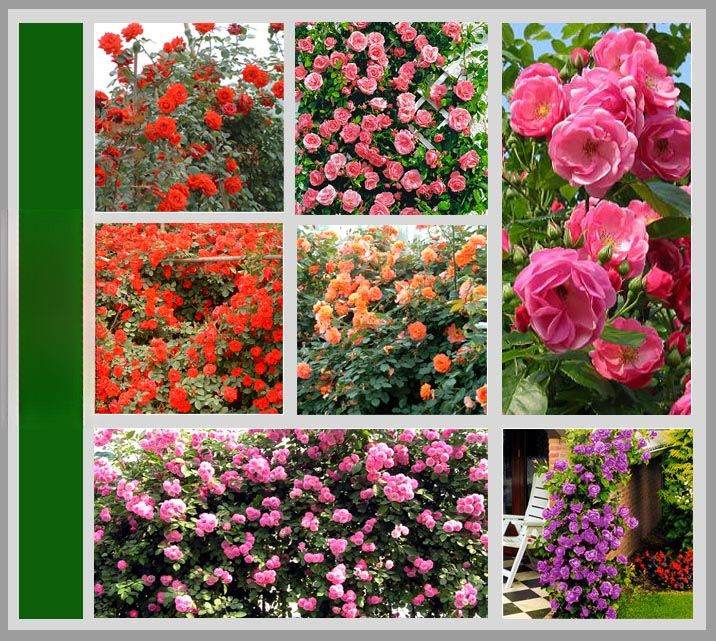
In the rose family, it is an important category. It likes light and dislikes shade. Under the condition of sufficient fertilizer and water, it has lush branches and leaves and colorful flowers. The daily management is the same as other roses. It is properly pruned in winter to cut off the remaining flowers, fruits, dead branches, etc., and fertilizer is applied to the soil. It will bloom in the next year.
The vines of climbing roses can generally reach 2.5-5 meters in length. It is precisely because of such long vines that they can play a variety of roles in parks, courtyards, and urban greening. Climbing roses can be planted into tall flower columns, flower hedges, flower walls, continuous flower screens or arc-shaped flower arches, winding flower corridors, etc., and there are flowers in three seasons. It can also be cultivated into an overwhelming flower barrier, which can be bent into an arc to make an arch, or it can be made into a flower corridor or flower pergola based on an iron frame. Versatile gardeners and park designers can also use this kind of rose to show their skills.
Climbing roses are deciduous shrubs that are vine-like or creeping, with different postures and strong plasticity. The short-stemmed varieties have branches that are only 1 meter long, while the long-stemmed varieties can reach 5 meters. There are spikes of different densities on its stems, with straight, oblique, curved, and hooked thorns, depending on the variety. The flowers are solitary, aggregated, or clustered, with flower stems ranging from 2.5 cm to 14 cm. The flower colors are red, pink, yellow, white, orange, purple, bordered, primary, and double-colored on the surface and back, etc., which are very rich. The flower shapes are cup-shaped, spherical, disc-shaped, and high-core.
There are many ways to classify climbing roses. According to their growth characteristics, they are classified into upright and climbing types.
Upright type: The branches are thick and can grow upright without relying on supports such as flower racks. The height is relatively low, generally between 1.5 meters and 2.5 meters. It can be used for flower hedges, flower barriers, flower walls, etc.
Climbing type: It has slender stems and vines, ranging in height from 2.5 meters to 10 meters. It needs to climb up the flower racks and pillars. It is mainly used for flower arches, flower corridors, flower columns, etc. According to its flowering habits, it can be classified into three categories: multi-season flowers, two-season flowers and one-season flowers. Multi-season flowers can bloom repeatedly during the growing season and bloom continuously until winter dormancy. Some vines not only bloom continuously, but also bloom in large quantities. They are the most suitable varieties for landscaping and have excellent beautification effects. Such as "Dortmund". After the two-season flowers bloom in May and June, they usually bloom in small quantities or not in summer and early autumn. They bloom again around the Mid-Autumn Festival, but the amount of flowers is far less than that in May and June. One-season flowers generally stop blooming after blooming in May and June, or can only bloom a very small amount of flowers in the future, and will bloom again next year. This type of variety often has strong drought resistance, disease resistance, cold resistance, and strong climbing ability.
In short, climbing roses grow strong and have strong climbing ability. The height of the plant can reach more than 2-5 meters in one year. The biennial internodes sprout and bloom all over the body. There are many flower heads, bright and unrestrained colors, and a long flowering period. It is an excellent three-dimensional greening variety. The three-dimensional greening that perfectly combines climbing roses and other greening varieties can improve the ecology, beautify the environment, and increase land utilization rate. It is also a manifestation of environmental benefits, social benefits, and economic benefits. In addition, three-dimensional greening is simple and easy, takes up less space, has great benefits, low costs, and quick results; it can better play the role of water storage and water conservation, which is also a manifestation of economic benefits. In the future, with the popularization of three-dimensional greening construction in major cities, climbing roses will play a greater spatial role in three-dimensional greening.
Name: Zatedeschia aethiopica,
also known as water lily, arrowhead flower.
Family: Araceae, Zantedeschia genus.
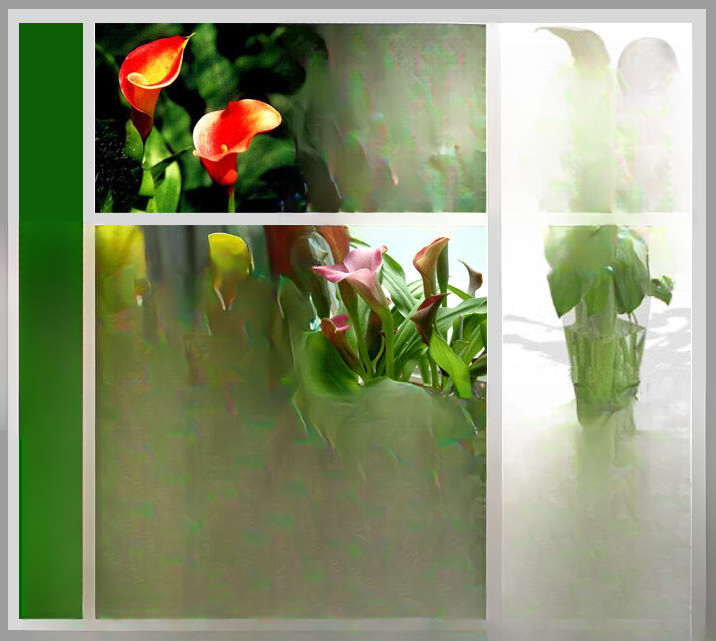
Its flower stems are elegant and graceful, the flower buds are white like horseshoes, and the leaves are emerald green with white spots, which can be said to be both flower and leaf. It is an important cut flower in winter and spring. It can be used as a vase or made into a bouquet or flower basket. Potted plants are ideal plants for decorating halls and venues.
Calla lilies are native to southern Africa. They like warm and humid environments. They need proper light during their growth period, especially after flowering, they need sufficient sunlight, otherwise the Buddha flame will appear green. The suitable temperature for growth is: from October to March of the following year, the temperature is 13-19℃, and from March to October it is 19-25℃. It is not cold-resistant and requires a minimum temperature of not less than 10℃. It is mostly potted and moved indoors during the frost season to prevent cold. It is not drought-resistant. When growing in a dry environment, it is easy to have yellow leaves. It needs more water during the flowering period. It is suitable for loose, fertile, well-drained sandy loam.
[Morphological characteristics] Perennial herb. It has a large fleshy tuber and is about 70 cm tall. The leaves grow on stems and have long petioles. The petioles are usually twice as long as the leaves. They are ridged at the top and folded in a sheath-like manner at the bottom. The leaves are ovate-arrow-shaped, entire, and bright green. The pedicels grow beside the leaves and are higher than the leaf clusters. The spadix is enclosed in the spathe, which is large and opens in a horseshoe shape. The spadix is cylindrical and bright yellow, with stamens at the top and pistils at the bottom. The fruit is fleshy and enclosed in the spathe. The flowering period is January. In places with suitable climatic conditions, seeds can be obtained, but generally there are few mature fruits.
[Habits] Originated from South Africa, it often grows beside rivers or in swamps. It likes warmth and is neither cold-resistant nor heat-resistant. The optimum temperature for growth is about 20℃. The rhizome will freeze and die at 0t. It needs sufficient sunshine in winter and appropriate shade when the sun is too strong and hot in summer. It likes humidity and a little waterlogging does not affect its growth, but it is not drought-resistant. Cultivation requires loose, fertile, humus-rich clay loam.
Name: Amaryllis
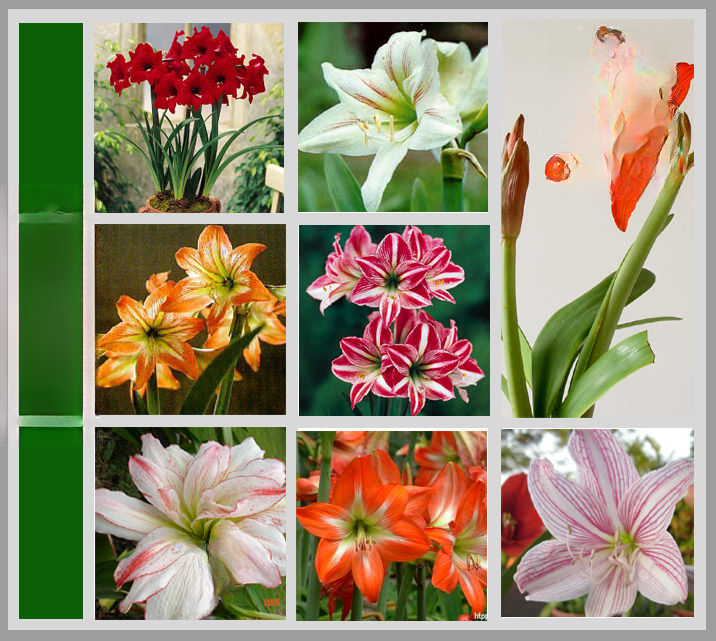
[Overview] Amaryllis, also known as amaryllis, centennial lotus and morning glory, is a plant of the genus Amaryllis in the Amaryllis family. The branches of Amaryllis are graceful and elegant, with 4 to 6 scarlet trumpet-shaped flowers growing on the top, opening towards the sun, and appearing particularly gorgeous and pleasing to the eye. Because the appearance of Amaryllis is very similar to Clivia, it is also known as "gentleman red". Tianjin calls it "rouge hole", which is quite interesting.
Now it is widely cultivated in countries around the world. In addition to potted ornamental plants, it is also planted in open-air gardens to form community landscapes and add to the garden scenery. In recent years, European and American horticulturists have specially produced Amaryllis into canned flowers for the convenience of flower growers.
[Morphological characteristics and varieties] Amaryllis is a perennial herb. It has a fat bulb that is nearly spherical. The leaves are ribbon-shaped and are pulled out at the same time as the flower stem or after the flowers bloom. The flower stem is hollow, with funnel-shaped flowers on the top. The flowers are large like lilies, and the colors are deep red, pink, water red, orange red, white, etc., and are inlaid with various stripes and patterns.
Common cultivars include Redlion, with deep red flowers. Hercules, with orange-red flowers. Rilona, with light orange-red flowers. Telstar, with large flowers and bright red flowers. Flower Record, with orange-red flowers and wide white vertical stripes. Souvereign, with orange flowers. Minerva, with large flowers and red flowers and white centers. Picotee, with white flowers with light green in the middle and red edges. Recently, Europe has introduced new varieties suitable for potted plants, including Las Vegas, which is a pink and white bicolor variety. Calimero, with small flowers and bright red flowers. Amigo, a late-flowering variety with deep red flowers, is considered the best potted variety. Nagano, with orange-red flowers and snow-white centers.
Common ornamental species of the same genus include H. aulicum, with deep red or orange flowers. Short-tube amaryllis (H. reginae) has red or white flowers. Reticulate amaryllis (H. reticulatum) has pink or bright red flowers.
Also known as wax orchid, cherry orchid, heath vine
genus: Asclepiadaceae Hoya genus perennial evergreen vine
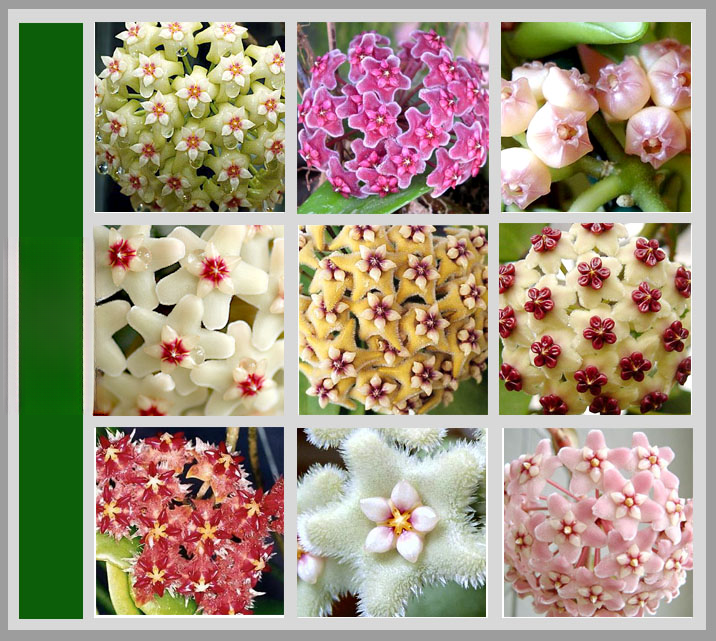
[Origin] South, Southeast Asia and Oceania
[Morphology] Evergreen fleshy vine. Stems can extend to more than 2m, with air roots on the nodes, clinging to trees or stones. Leaves are entire, opposite, short-stalked, fleshy, shiny, ovate-elliptical or ovate-cordate, with gradually pointed tips, reddish in the first leaves, and green in the old leaves. Cymes, dozens of small flowers densely grown on the inflorescence, spherical, waxy, white corolla, light red in the heart, flowering period from May to September, long-lasting fragrance.
[Habits] Prefers hot and humid semi-shady environment and slightly dry soil, and must be prevented from exposure to sunlight in summer and autumn. Although it can grow in places without direct sunlight, it needs 3-4 hours of sufficient sunlight every day to bloom. Prefers fertile, breathable, well-drained soil, requires sufficient water during the growth period, but avoids excessive moisture. Gradually reduce watering after autumn.
[Propagation and cultivation management] Propagate by cuttings or layering, easy to root above 20℃. All vines except those that have not yet unfolded their leaves can be used as cuttings.
Name: Clivia,
also known as large-flowered Clivia, large-leafed Lycoris, sword-leafed Lycoris, and
Damulinaceae : Amaryllis family Clivia is a perennial green herb
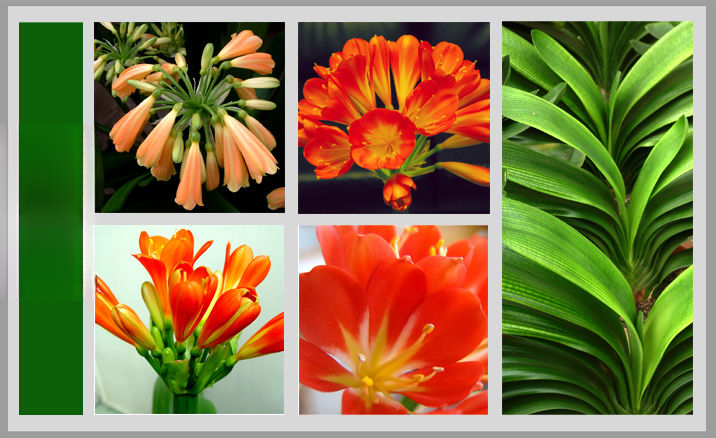
The root system is thick and fleshy. Pseudobulbs form at the base of the leaves; the leaves are leathery and dark green. The umbels have several to dozens of flowers; the flowers are funnel-shaped, upright, and orange-red. Its variant, the yellow-flowered Clivia (var. aurea Regel), blooms in winter and spring. It is native to South Africa. It is robust and likes a warm, humid and semi-shady environment. It requires well-drained, fertile loam. It is not cold-resistant. Clivia can be used to arrange flower beds or cut flowers in southern China, and as indoor potted plants in eastern China and areas north of the Yangtze River for viewing leaves and flowers.
, also known as Camellia sinensis
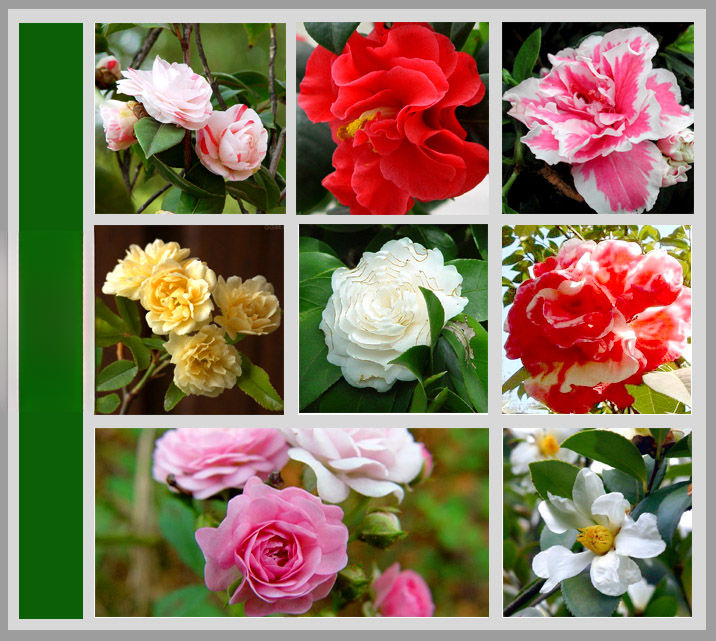
[Morphological characteristics and varieties] Camellia is an evergreen broad-leaved shrub. The leaves are alternate, leathery, oval, with serrated edges and dark green. The flowers are solitary or 2-3 flowers are born at the top of the branches or between the axils of leaves. The flowers are single or semi-double. Double. Common varieties include single-petal type Chenxi, the flowers are wrinkled and pure white; Sai Jinguang, the flowers are white, with pink lines and sprinkled with fine dots; Dahua Jinxin, the flowers are bright red, and the flower diameter is 6-7 cm; semi-double types include Sai Luoyang, the flowers are red with white spots; Dasongzi, the flowers are deep red; Zui Yangfei, the flowers are pink; Xingtao Peony, the flowers are pink. The double-petaled ones include White Pearl, with pure white flowers; Red Hibiscus, with peach-pink flowers; Flower Hibiscus, with white flowers with red lines; Flower Pearl, with pink flowers with irregular red stripes; Five Cranes Holding a Ball, with bright red flowers; Flower Buddha Tripod, with bright red flowers with a few white spots; Red Eighteen Bachelors, with red flowers; Red Dan, with bright red flowers; and Flower Crane Feather, with light pink flowers with white spots.
family: Caprifoliaceae, honeysuckle, evergreen or semi-evergreen winding vine
native to Korea, Japan, etc.
Honeysuckle vines are winding, with lush branches and leaves, blooming in spring and summer, and rich fragrance. It is an ideal outdoor potted flower in spring and summer.
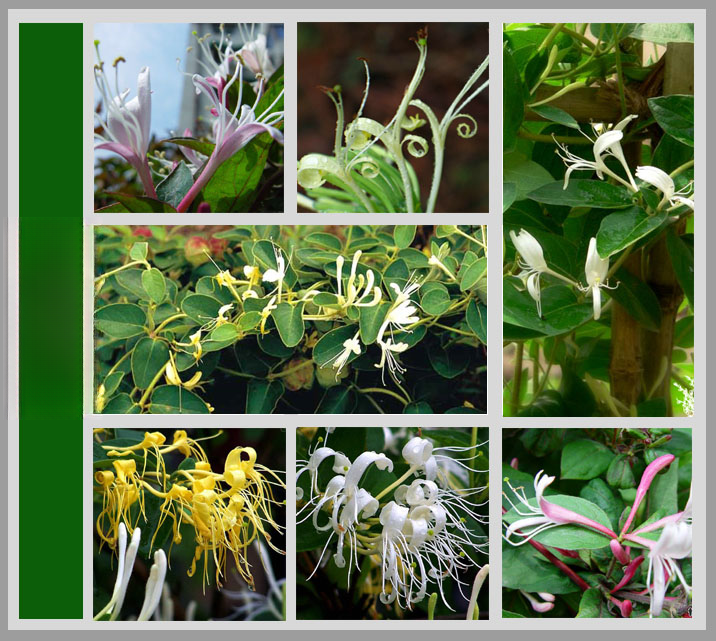
Morphological characteristics:
Honeysuckle is an evergreen twining vine with strip-like peeling stems and hollow branches; leaves are opposite, ovate or nearly heart-shaped; flowering period is long, 2-3 months. When planted in pots in the Yangtze River Basin, the first flowers are generally in mid-April. Common varieties include red honeysuckle, white honeysuckle, and four-season honeysuckle. Red honeysuckle has a reddish outer corolla; white honeysuckle blooms white and then turns yellow; four-season honeysuckle blooms continuously in spring, summer, and late autumn.
Biological habits:
Honeysuckle likes a warm, slightly humid, and sunny environment. Although it is also shade-tolerant, it is easy to cause the plant to grow too long, the branches to be thin, the leaves to be thin and small, and it is not easy to bloom in a hidden environment, affecting the beauty of the plant shape. The suitable temperature for growth is 12℃~26℃. If the temperature is too low, it is easy to cause the leaf surface to turn red and grow slowly. This is because sugar metabolism is blocked, thereby synthesizing more anthocyanins. Honeysuckle is not very demanding on soil and can adapt to both acidic and alkaline soils. It is resistant to drought and waterlogging, but water should not accumulate in the pot.
also known as snow mud
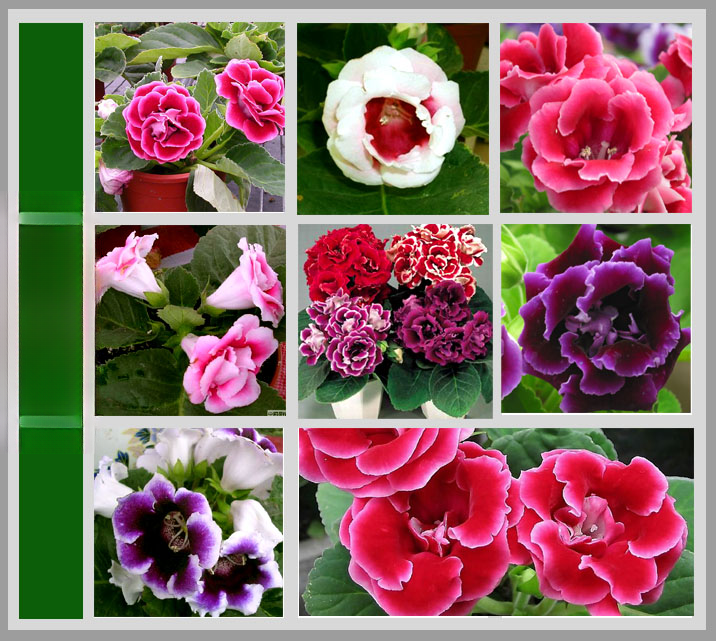
introduced mainly in the 1930s by the Agricultural College of Jinling University and the Memorial Botanical Garden of Sun Yat-sen Mausoleum in Nanjing from the United States. After the establishment of the new botanical gardens in various places, it was officially introduced and tested. It was not until the 1990s that small-scale production began, and it has not yet formed a scale.
[Morphological characteristics and varieties] Gloxinia is a perennial herb. The tuber is oblate. The leaves are opposite, thick and large, and densely covered with hairs. The flowers are bell-shaped, colorful, large and beautiful. There are many cultivated varieties of Gloxinia, and the flower colors include blue, pink, white, red, purple, etc. There are also white-edged blue flowers, white-edged red flowers, and double flowers.
[Biological characteristics] Gloxinia is native to Brazil. It grows wild in tropical plateaus with cool summers and warm winters. Gloxinia likes warm, humid and semi-shady environments during its growth period. The suitable temperature from January to October is 18-23℃, and from October to January of the following year it is 10-12℃. The high temperature and humidity in summer are not conducive to the growth of the plant, and proper shade is required. The air humidity is required during the growth period, and the leaves grow lush and green. Keep dry during the winter dormancy period. If the humidity is too high and the temperature is low, the tubers are easy to rot. The temperature in winter should not be lower than 5℃. Fertile, loose and well-drained humus-rich soil is required.